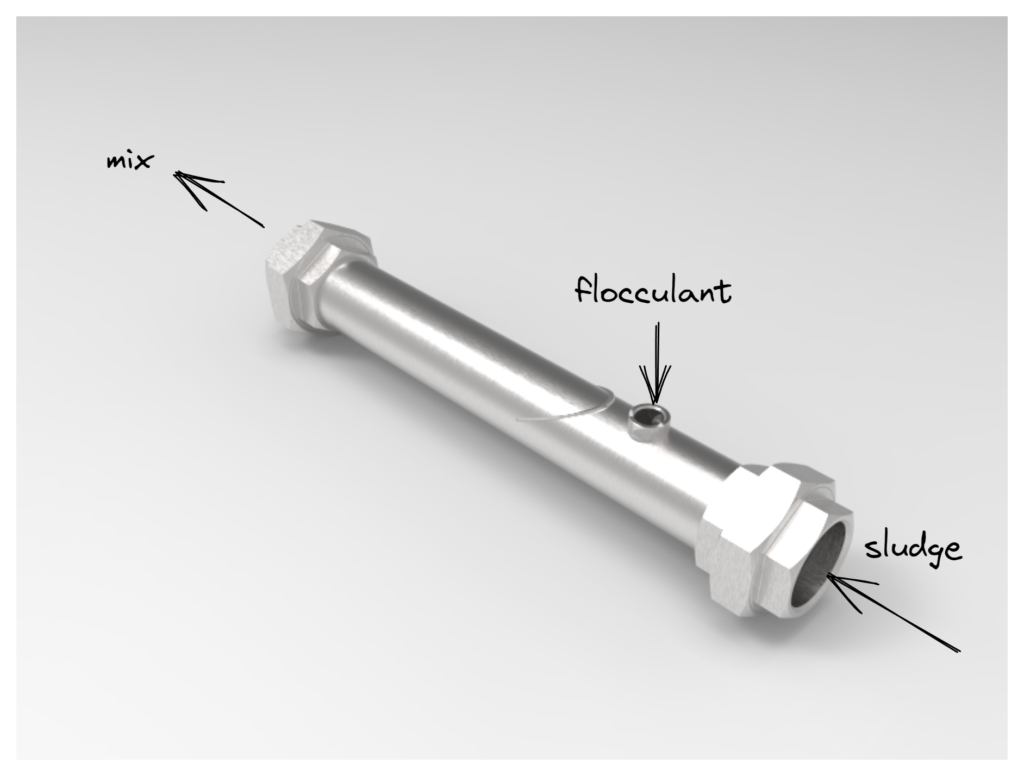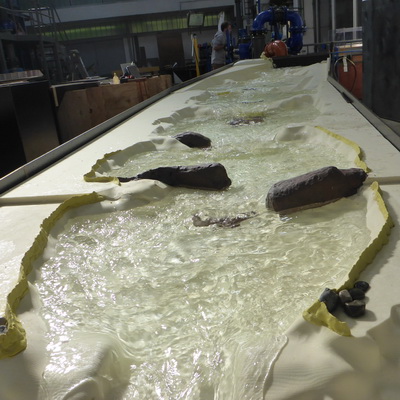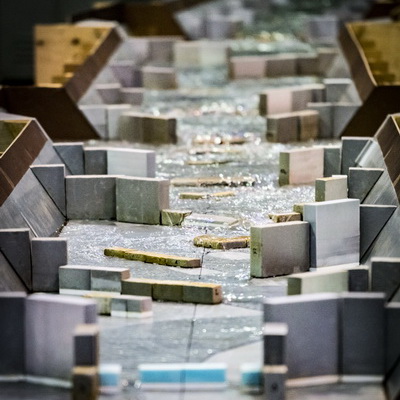In-Line Mixer

Last year, together with our colleagues from AMCON Europe s.r.o., we developed and tested prototypes of a pipeline mixer in two versions: static and dynamic. This year the product was successfully launched on the market. In this article you will learn more about its development and testing. In the meantime, we recommend you watch the introductory video below.
R&D
An in-line (or a pipeline) mixer is a device that allows mixing of chemicals without tanks. This solution is often used when dosing flocculant/coagulant into the sewage sludge prior to dewatering. AMCON Europe Ltd. is in the business of providing tailor-made sludge thickening and dewatering services to European treatment plants. Last year we had the pleasure of working with this company on a project to optimise chemical dosing during dewatering. One of the results of this project is a pipeline mixer (also mixer).
The principle of the device is simple. A special mixing insert inside the tube promotes a transverse flow that induces mixing of the liquids.

In the case of a dynamic mixer, the mixing is done with the help of a stirrer located on the motor shaft (see the introductory picture of the article). Although the principle is really simple, the optimization of the mixing elements is not. After all, the purpose of developing the actual device is to
- have better mixing efficiency than than of competitors
- and reduce pressure loss and cost of production.
This is where our work begins. By combining CFD simulation and machine optimization, we achieved unexpectedly good results. In fact, we generated dozens of designs with different mixing element locations and blade shapes. In the graph below you can see them distributed according to pressure drop and mixing efficiency.

We then optimized the shape and placement of the mixing elements based on manufacturability only. This is how the first prototype was created.
Validation
These mixers have been successfully validated several times in practice, i.e. at the WWTP near Prague. But it is known that every model needs to be validated at the same time. Validation serves as proof that we can continue to rely on our CFD models. We went with testing the prototypes on a specially built test line in the water management hall of the Faculty of Civil Engineering of the CTU.

For the purpose of evaluating the mixing process, we chose the conductivity fluctuation before and after the mixer. During the flow, we injected a salt solution into the mixer, which has a much higher conductivity than the flowing water. The conductivity sensor downstream of the mixer was designed to pick up these fluctuations in conductivity value. When the fluctuation is negligible, it means that the mixing is efficient and stable. Otherwise, it could be described as insufficient and unreliable. Fortunately, our prototype exhibited low fluctuation, and thus we can consider our CFD model as successfully validated by this direct method.
Conclusion
This is what our cooperation with AMCON Europe s.r.o. looked like: CFD optimization, testing at the treatment plants and verification in the laboratory. These two mixers were not the only outputs from this project. This was followed by the optimisation of the flotation unit and the development of equipment for the assessment of the dewaterability of the sewage sludge. We would be happy to assist you with similar projects in sludge dewatering or chemical blending.





